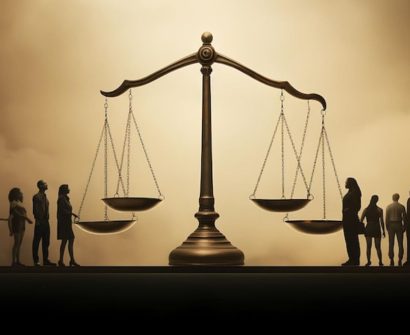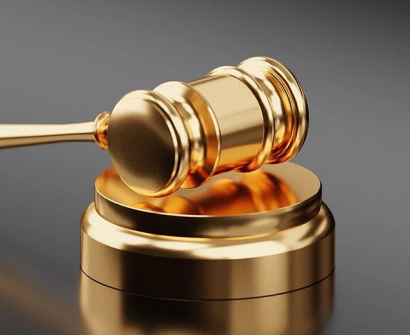
Few provisions in the broad structure of the Indian constitution have caused as much debate, dispute, and mystery as Article 356, Frequently alluded to as “President’s rule” or “State Emergency,” Article 356 of the Indian Constitution provides the President of India an unparalleled power to disband a state government and impose immediate control by the Central government in certain circumstances.
This provision has been commended as a vital instrument for safeguarding the Union’s integrity and condemned as a dangerous political tool, considering its intended protection against state-level constitutional systems breaking down.
Article 356 of Indian Constitution
Article 356 of the Indian Constitution addresses what happens if the state constitutional apparatus fails. It gives the President the authority to dissolve the state legislature and impose his or her will. There are two types available:
- If the governor of the state informs the president that the state’s conditions prohibit the state government from performing its constitutionally mandated tasks, or if the president is persuaded or satisfied in any other way.
- Article 365- This Article states that any state that disregards all directives from the Union about subjects under its jurisdiction may be subject to the President’s Rule.
president rule: When it is Imposed?
- For a period of time set by the state governor, the state legislature is unable to choose a leader to serve as the Chief Minister.
- A coalition in the state government breaks down, leaving the chief minister with minority support in the legislature and unable to demonstrate his majority within the governor’s allotted time.
- A loss of majority in the legislative assembly due to a vote of no confidence.
- Elections are postponed because of unforeseen circumstances like a natural disaster, an epidemic, or a conflict.
- Article 365
president rule: What Happens after it is Imposed?
- On behalf of the President, the governor continues to administer the state. He or she enlists the assistance of the Chief Secretary of the state as well as any other consultants or administrators that they may choose.
- The President may proclaim that the Parliament will exercise the powers of the state legislature.
- The President would either dissolve or suspend the state legislative assembly.
- The President has the authority to enact laws pertaining to state administration when the Parliament is not in session.
article 356 of indian constitution: Powers of the President
- He has the authority to take back the powers granted to the state’s constitutional apparatus and carry them out himself. In other words, the President is able to carry out all official duties, including those of the governor, anybody or authority inside the state, and any function of the state government.
- The President may announce that the Union Parliament or any other body subordinate to it will perform the functions of the state legislature as the President will not be endowed with such powers.
- The President is granted broad authority to enact any ancillary or consequential legislation to support the proclamation.
article 356: Case of S.R. Bommai v Union of India
- Article 356 rules were proposed by the Supreme Court. In summarizing its position, the Court said that the President is merely carrying out the decision of the Union Council of Ministers, which is actually led by the Prime Minister. It declared that rather than being an absolute power, the authority granted by Article 356 is conditional.
- The Court’s main finding was that the authority granted under Article 356 was subject to judicial review. In this case, the Court has further established the circumstances under which a state emergency may be declared in accordance with this clause.
president rule article 356: Its Misuse
- Despite B.R. Ambedkar’s assurance that Article 356 would remain a dead letter, it has been misused or applied more than 125 times.
- Instead of a true malfunction of the State’s constitutional system, it was nearly always employed for political purposes.
- Up to 27 times, former prime minister Indira Gandhi invoked Article 356; often, she did so to overthrow majority governments on the grounds of political stability, lack of a clear mandate, or support withdrawal, among other reasons.
- When the state Congress governments were elected for the first time in 1977, the Janata government dismissed nine of them as payback.
- When Indira Gandhi came back to power in 1980, she overthrew nine majority Opposition governments in one stroke.
- Similar actions were taken by succeeding administrations as well.
India has repeatedly enforced Article 352, and the number will keep growing. Reviving a state from a dire situation and getting it back on track with the constitution’s provisions has been very helpful in the past.
Article 356 of Indian Constitution FAQs
- What are the grounds for Article 356?
Article 356 of the Indian Constitution is based on Section 93 of the Government of India Act, 1935. Article 356 states that any state in India may be placed under President’s Rule if the constitutional machinery fails.
- What is the controversy of Article 356?
The Karnataka government led by S R Bommai was overthrown by the Center in 1989. The terms of Article 356 were extensively deliberated by the Supreme Court in its ruling in the seminal S. R. Bommai v. Union of India case.
- Can Article 356 be challenged in court?
Article 356 proclamation may be overturned by the courts if they determine that it was made dishonestly or for completely unrelated reasons. The court would assess the proclamation to determine whether any material, even if only partially relevant, was used to support the decision to impose the President’s Rule.
- Which emergency can be declared under Article 356?
Article 356 of the Indian Constitution grants the President of India the authority to establish a state of emergency, thereby superseding the state administration.
- What is the maximum time for state emergency?
The Parliament must provide its approval for such an emergency within two months. It is enforced for a maximum of three years after the first six months of implementation, subject to renewed parliamentary approval every six months.
- What is the difference between Article 355 and 356?
Article 356 places the centre’s authority over the whole governmental apparatus. But only the state’s law and order, which is a state subject, is taken under the centre’s jurisdiction under Article 355 (the term of which is not mentioned in the Constitution).
- Who declares state emergency in India?
If the governor of any state notifies the president that, in his opinion, the state is not governing lawfully or constitutionally through a report. In the event that the president determines that the state governor is not abiding by the constitutional clause. The state of emergency can then be declared by the president.
- Which Online rjs coaching is best for RJS preparation?
The reputable Jaipur Online rjs coaching program “Jyoti Judiciary Coaching” aids students in getting ready for the RJS exam. A systematic approach to RJS test preparation is made possible by Jyoti Judiciary, the top offline and online RJS coaching program in Jaipur. Their curriculum has been carefully designed to cover all the subjects and courses required for passing the Rajasthan Judicial Service Examinations.
- Which coaching is best for judiciary?
The most effective judiciary coaching in Jaipur is provided by Jyoti Judiciary Coaching. The objective is to create a comfortable learning environment for the students. It makes the difficult task seem easy, which increases the likelihood of achieving the desired outcome. The objective at Jyoti Judiciary is to give students the best possible education possible. The Institute pledges to use every resource at its disposal to provide you with the finest preparation for the Judicial Services entrance examinations.
With the goal of giving students the best coaching available for law entrance exams including the CLAT, AILET, and various other numerous state judiciary exams, Jyoti Judiciary Coaching, India’s Finest educational Platform, was established. Come enrol now with Jyoti Judiciary!
For any latest news, legal topics, judiciary exams notifications, patterns, etc watch Jyoti Judiciary’s YouTube channel for legal videos for any updates at https://youtube.com/@jyotijudiciarycoaching4852?si=2cwubh9d2A9urwJf










